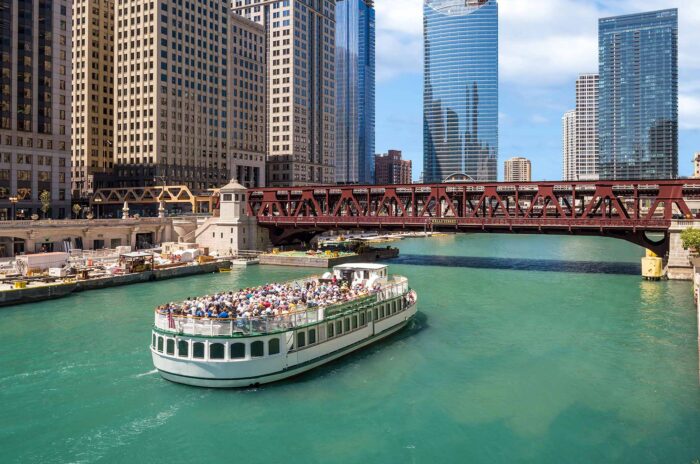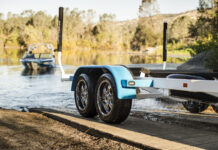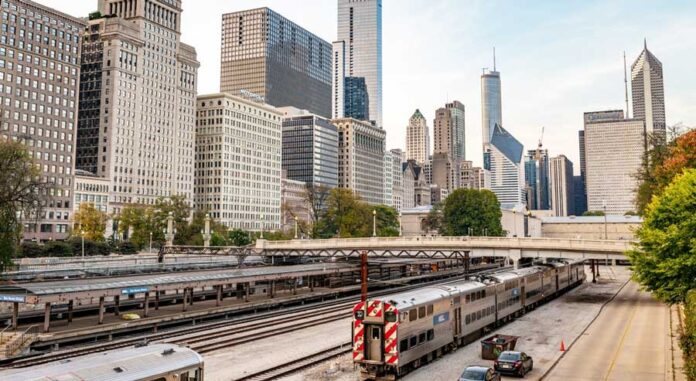
The third-largest city in the US, Chicago, is easy to visit thanks to public transportation. This means that visitors can enjoy various attractions in the city, such as the famous Bean in Millennium Park, a visit to Wrigley Field, or a performance at a legendary music venue, all by means of public transportation.
Getting around Chicago is relatively easy with the L, a combination of subway and elevated trains. But buses are also handy when you’re in the suburbs or downtown. These are just a few of the well-known modes of transportation.
Below, we will explore more Chicago transportation methods so that you can figure out which one best suits you and our needs when visiting Windy City.
1. Boat
Water taxis are an excellent alternative to using the bus or walking. These are boats that travel the Chicago River and provide a fun way to visit Chinatown or the Museum Campus. There are two types of water taxis in Chicago: the Chicago Water Taxi and the Shoreline Water Taxi. The latter connects some of the city’s most prominent sights.
The Chicago Water Taxi service operates from March to December each year. The boats go through the city’s waterways, starting at the Michigan Avenue Bridge and ending at Madison Street. During the summer, the boats go to Chinatown. One-way rides on the service are $6, and an all-day ticket is $10.
From May to September, the Shoreline Water Taxi provides various services. Some of these include the Lake Taxi, which takes you to the South Loop, The Shedd Aquarium, and the River Taxi, which connects Polk Bros Park to Willis Tower.
One-way adult tickets are $6–10, depending on the day. Children under ten pay half the price. Weekends are peak travel times. Another option is the Commuter Taxi, which connects Union Station and Willis Tower.
2. Rent A Bike
In Chicago, a bike-share program allows riders to take their bikes on public transportation. However, they must pay for the privilege of using the L trains during the morning and evening rush hour. Most city buses have bike racks that can accommodate two riders at a time.
The Chicago-based bike-share company, known as Divvy, has 600 stations in the city and suburbs. For $15 a day, you can get unlimited rides for 24 hours. On the other hand, a single-ride pass is only $3.30 and can be used for 30 minutes.
You can purchase passes through the Divvy app or at station kiosk. The app makes it easy to check availability and find your dock.
For those who want to ride for more extended periods of time, a bike rental company will charge around $8 per hour, with additional equipment such as locks and helmets. Some of the best places to rent are Bobby’s Bike Hike and the nearby bike shop known as Bike & Roll.
3. Chicago Chauffeur Service
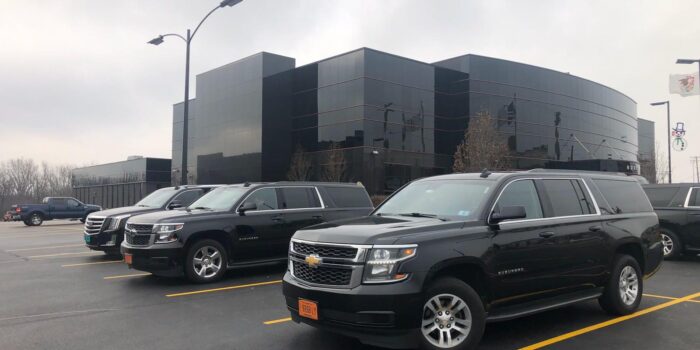
Taxis are easy to find, but Chauffeurs offer significant savings. While it’s not too expensive to hail a cab and take it from one point to another, the expense stacks up rather quickly when you try to take a taxi to every place in Chicago that you want to visit.
With drvn, you can purchase the ride from point-to-point as you go or hire a driver per hour to take you to all your necessary places. Either way, you won’t have to worry about finding your next ride or over-paying to travel through the city. Likewise, you will need to wait more than 30 minutes for transfers or trains to get to where you are going.
4. Taxi
Taxis are plentiful in the Chicago area, especially in areas such as Bucktown, Andersonville, and northwest of Wicker Park. You can hail a cab using a wave of the hand, and the rates are set by the meter.
The fare for the first passenger is $1, and additional passengers are 50 cents each. Tipping 10% to 15% is customary. Some major Chicago companies that accept credit cards include Flash Cab and Checker Taxi.
5. Ridesharing
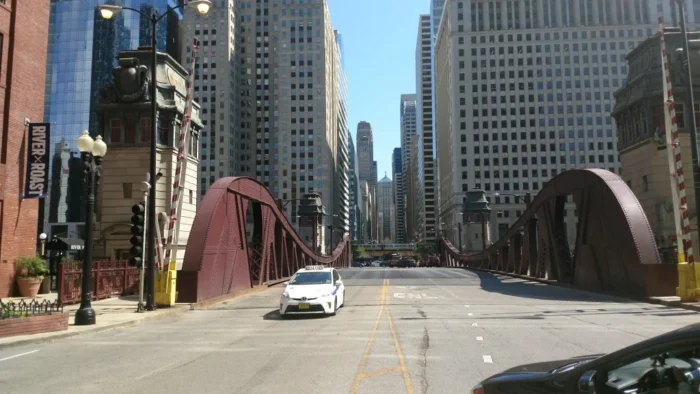
Ridesharing services such as Via, Uber, and Lyft are also popular in the city. Depending on which one you use, you can expect to pay a decent amount of money.
However, the downfall is that the more traffic there is, the more you will have to pay to get to where you are going. Some rides can cost upwards of $30 to go just 5 miles.
6. Train
The L train is fast and frequent in Chicago. It will take you to most parts of the city and O’Hare International Airport. Two of the city’s eight color-coded lines, which are known as the Blue and Red Lines, run 24 hours a day. The other lines, which are less frequent, run from 4 AM to 1 AM daily.
L trains run through the suburbs and then drop below ground in Chicago’s Loop, which is a central portion of the city. The fare is only $2.50, with free transfers within two hours. You can also use a Ventra card to pay for your ride.
The commuter trains operated by the Metropolitan Transportation Authority (MTRA) provide service to the Chicago suburbs. Some lines run every day, while others only during certain times of the day. You can also buy tickets at the stations.
7. Rent A Car

Driving yourself around Chicago is not fun. The city’s traffic can take a long time to get through, especially during the morning and evening rush hours. If you’re planning on visiting the city, consider using public transportation instead of your car.
If you are planning on visiting the suburbs or traveling to Chicago for a day trip, you can rent a car from the usual establishments in the city. The rates can vary significantly, and you’ll need to be at least 25 to rent a car.
In Chicago, the car-sharing service Zipcar is very popular. Its daily rate is around $91, and it includes gas, insurance, and parking spaces. To become a member, you have to pay a monthly fee of around $7 or $70 annually.

